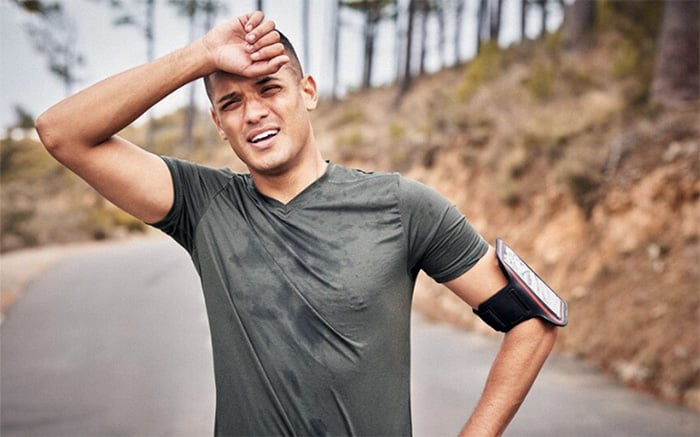Running in the heat isn’t just uncomfortable—it can be dangerous. When the temperature rises, your body works harder to cool itself. Blood flow is redirected from your muscles to the skin to dissipate heat, your heart rate increases, and you sweat more to regulate core temperature.
In humid conditions, that sweat doesn’t evaporate efficiently, and your internal temperature climbs faster. The result? You tire sooner, your pace slows down, and the risk of heat exhaustion—or worse, heat stroke—goes up.
But with a few effective strategies, it’s still possible to enjoy your summer miles safely. Let’s break them down.
1. Run early or late
Timing matters. The sun is at its strongest between 11 a.m. and 4 p.m., so plan your runs for early morning or after sunset. You’ll avoid peak heat and UV exposure—and the cooler air can make the same run feel noticeably easier.
2. Adjust your pace and expectations
Heat is a natural performance limiter. Your body diverts energy to cooling instead of fueling speed, so don’t fight it. Slow your pace, shorten your run if needed, and remember that effort, not pace, should guide you in hot conditions.
A wise runner listens to their body, not their watch.
3. Dress light and breathable
Choose moisture-wicking, technical fabrics that let sweat evaporate. Loose-fitting, light-colored gear helps reflect sunlight and promotes airflow. A mesh cap or visor can shade your face without trapping heat like a regular hat might.

4. Hydrate—but smartly
Start your run well-hydrated, and take small sips during longer efforts—especially if you're running over 45–60 minutes. But don't overdo plain water. Excessive intake can dilute sodium levels in the blood, leading to hyponatremia. On hot days, supplement with electrolytes to replace what you lose through sweat.
5. Use cooling strategies
Every bit of cool helps. Pour water over your head, neck, or wrists mid-run. Freeze your water bottle the night before so it stays cold longer.
Some runners swear by stuffing ice in a buff or sports bra. Even a pre-run cold shower or ice slushy can give your body a head start on staying cool.
6. Choose shaded routes
Seek out tree-lined paths, parks, or forest trails where the temperature can be several degrees cooler than on open roads. Avoid blacktop, which radiates heat and makes everything feel more intense. If you live in a city, try to run near water or green spaces for natural cooling.
7. Watch for heat illness signs
Pay attention to how you feel. Early signs of heat exhaustion include dizziness, nausea, cramps, excessive sweating, and headache.
If you stop sweating or feel disoriented, it could be a heat stroke—an emergency. Stop, get to a cool place, hydrate, and seek help if symptoms persist.
8. Adapt over time
Your body can become more heat-efficient—but it takes time. It usually takes 1 to 2 weeks of gradually increasing exposure to heat for your body to adapt. Start with shorter runs in warm conditions, and slowly build up.
9. Use sunscreen
UV rays are stronger in summer and can be amplified by sweat. Apply a sweat-resistant, broad-spectrum sunscreen (SPF 30 or higher) before your run—especially on the nose, ears, neck, and shoulders.
10. Plan loop routes with hydration stations
Instead of heading out for one long loop, try a shorter one you can repeat, passing by your home, car, or a water fountain. This lets you stash cold water, a towel, or an electrolyte drink where you can access them every 15–20 minutes—no need to carry everything with you.
Read next:7 Things to Avoid if You’re New to Running
Stay safe, stay cool
Running in hot weather demands respect—but it doesn’t have to mean staying indoors all summer. With good hydration and a few cooling tricks, you can keep training without burning out (literally). Adjust your expectations and embrace those early sunrise miles—they might just become the best part of your day.









